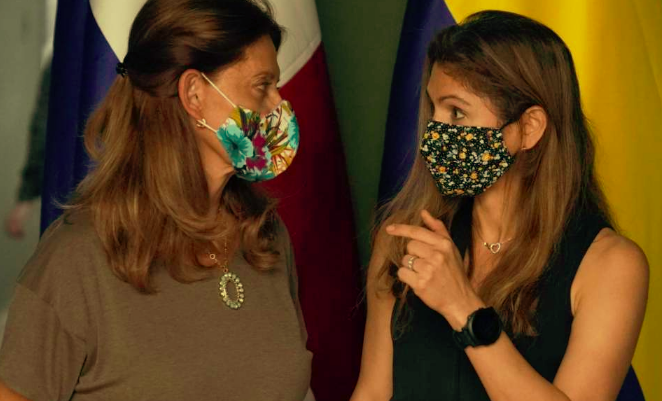RIO DE JANEIRO, BRAZIL – Panama and Colombia agreed on Friday (6) to implement a plan to control the flow of thousands of migrants in transit to the U.S. that are generating a humanitarian crisis on the common border, as well as to work to prosecute human traffickers who profit from this phenomenon.

After a high-level meeting in the Panamanian town of San Vicente, Darien province, the Panamanian Foreign Minister, Erika Mouynes, and her Colombian colleague and Vice President, Marta Lucia Ramirez, insisted on the need for the countries of origin, transit, and destination of these migrants, mostly Haitians who are leaving Chile, to get involved in providing a coordinated solution to avoid humanitarian or health crises.
At least 10,000 migrants in transit are stuck in the Colombian municipality of Necoclí. Next Monday, the authorities of both countries will meet to define how many will be able to cross to Panama each day and by which route, as announced on Friday.
Mouynes announced that next Monday, security, migration, and Panamanian Foreign Ministry authorities would travel to the Colombian side of the border “to determine a number or a quota” of migrants who can cross daily and “be received in a safe and orderly manner on the Panamanian side”.
The Panamanian Foreign Minister recalled that this flow of migrants from countries worldwide to North America has been occurring for more than a decade and that Panama has always dealt with it “with a humanitarian approach”.
According to Panamanian official data, 49,000 migrants have crossed into Panama, mostly of Haitian and Cuban nationality so far this year.
Ramirez said on her part that at the meeting next Monday they will work so that “preferably” the daily contingent of people crossing the border “move through a single place, have a single place of arrival in Panama, move hopefully with a fully organized transport and controlled by the authorities of Colombia” and avoid their passage through the dangerous jungle of Darien.
“It will be defined how they will leave, how we organize this maritime traffic (or) the transportation that is defined, the number of people that Colombia can, responsibly, control, hopefully, we can also have biometric, sanitary controls,” she added.
In 2016, in the midst of a Cuban migrant crisis, Panama and Costa Rica agreed on a controlled flow scheme, which on the Panamanian side includes health care, food, and biometric records, according to authorities.
The foreign ministers emphasized that they will work together to identify and bring to justice the human traffickers who are profiting from this migratory movement, for which, said Ramírez, they will count on “the work of Ameripol, Interpol and Intelligence”.
“Our two countries have a great humanitarian commitment, but they are two countries that are exposed to all this human trafficking going hand in hand with drug trafficking that both countries want to avoid,” added the Colombian vice president.
Mouynes and Ramírez also stressed that they hope that “truly joint solutions” to this migratory flow will be achieved at the ministerial meeting convened by Panama for August 11, in which Brazil, Chile, Colombia, Ecuador, and Costa Rica have already confirmed their participation.
“The origin of this migration at the moment is mainly Chile; we have to work hand in hand with the Chilean authorities, but the destination is also Canada and the US, and for this reason, we have to involve them,” said Ramirez.

